Disclosure: Please note that some links are affiliate links, and at no additional cost to you, we earn a commission if you make a purchase.
If you would like to support this website in some way, using these links will help do exactly that.
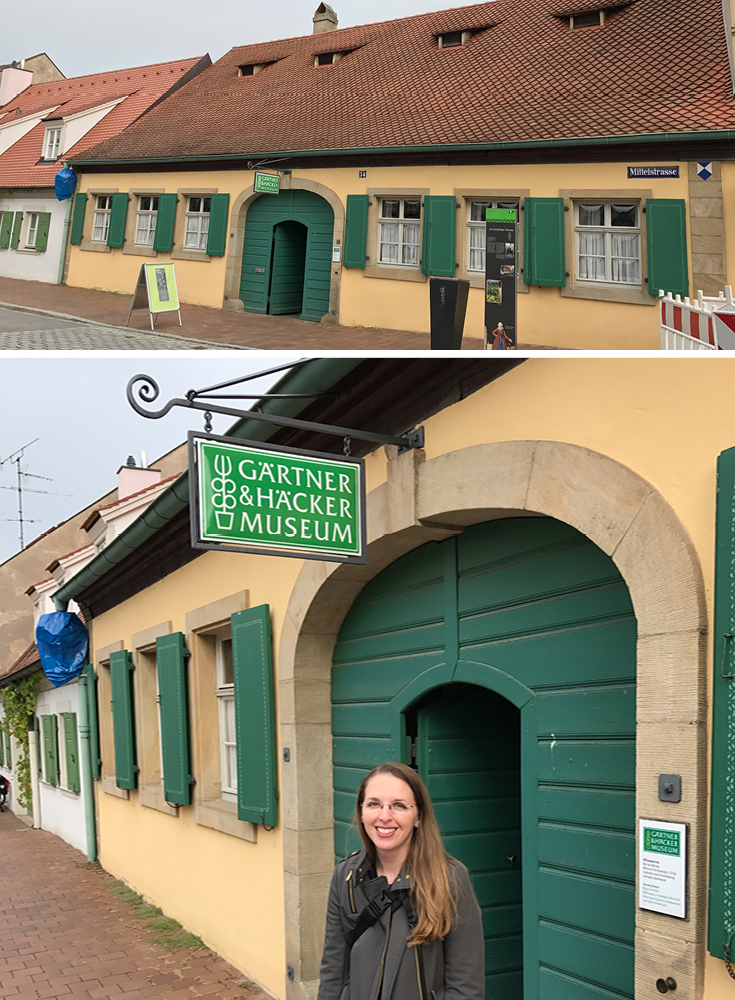
A large part of what makes Bamberg who it is as a city, and worthy of UNESCO world heritage as an entity, is it's unique gardening culture within the city limits. To understand why this is important, you have to see it. Visit Bamberg Market Gardeners’ and Vintners’ Museum and explore the surrounding gardening neighborhood with a guided map (sorry only in German Gardeners' District circular route (1,6 MB))
First off, I loved visiting the Gardeners’ and Vintners’ Museum in Bamberg. It was easily the most meaningful part of my trip to Bamberg. However, leading up to visiting, I was uncertain what I was really in for. The official website is completely in German, and the only other mention in English was abbreviated on other sites. If the website was only in German, would the museum only be in German? I was relieved to discover some English signage, and the available audio tour was completely available in English. So never fear! To help with the language barrier, I’ve typed up two of the English signs which I found at the museum that provide a great overview. Altogether, with my comments and photos, you'll agree that this museum is a must-see in Bamberg, Germany!
Listen to the Audio Guide, or Pass?
There are very, very few signs in the exhibits. You really need the audio guide to get the most out of your visit. The audio guide numbers hang from the ceiling and if it was a solid color and or had a wreath it was a main/general topic. Others were about specific items, like the kids toys. This way you still control your trip, rather than having the audio guide tell you where to go, which was nice.
How Long Will a Visit Take?
Estimate 1 hour if doing the audio guide.
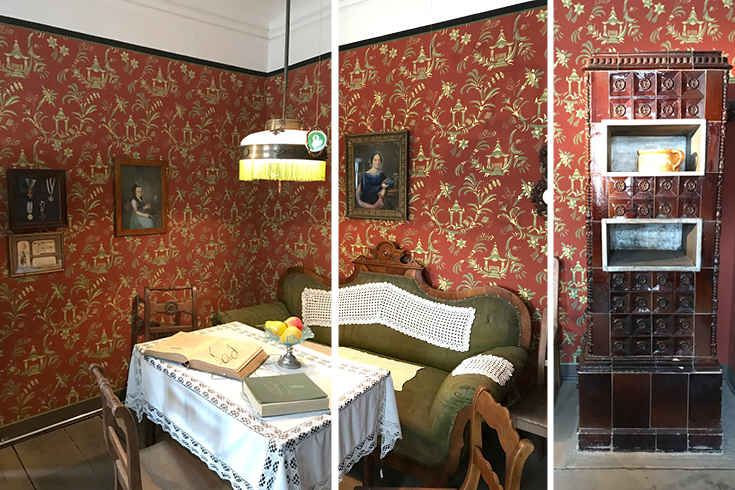
Taken from English Signage in the Museum
“Welcome to the Gardeners’ and Vintners’ Museum!
The museum offers an insight into the lives, culture and history of the city’s market gardeners and vintners. When Bamberg received World Heritage Site status in 1993, the unique cultural landscape of the market garden lands within the citiy was one of the reasons.
Based in a typical gardener’s house from 1767, this indoor and outdoor museum invites you to learn about the gardeners’ lives around 1900. The diversity of vegetable and herb varieties as well as tools and religious customs are also documented. The gardeners and vintners of Bamberg founded a museum society in 1975 and opened their museum in 1979. In 2012 the exhibition was completely redesigned.
Since the late Middle Ages, Bamberg’s gardeners have made use of the lands east of the Regnitz river. The mild climate was conducive to growing many varieties originating in Mediterranean areas. Bamberg’s gardeners became known throughout Europe and achieved commercial success through the trade in liquorice root (the raw material for medicinal remedies and liquorice confectionery) as well as in seeds for onions, caraway, leeks, swede, turnips and beets, kohlrabi, lettuce and spinach.
The vintners’ were known, like the gardeners, as farming townsmen (Häcker in local dialect, which derives from the hacking action associated with their work and their tools). In the 18th century the climate grew colder due to the Little Ice Age and production of Bamberg wine, which had come to be called belly-biter (Ranzenbeißer), was no longer viable. The producers switched to hops, fruit and grains.”
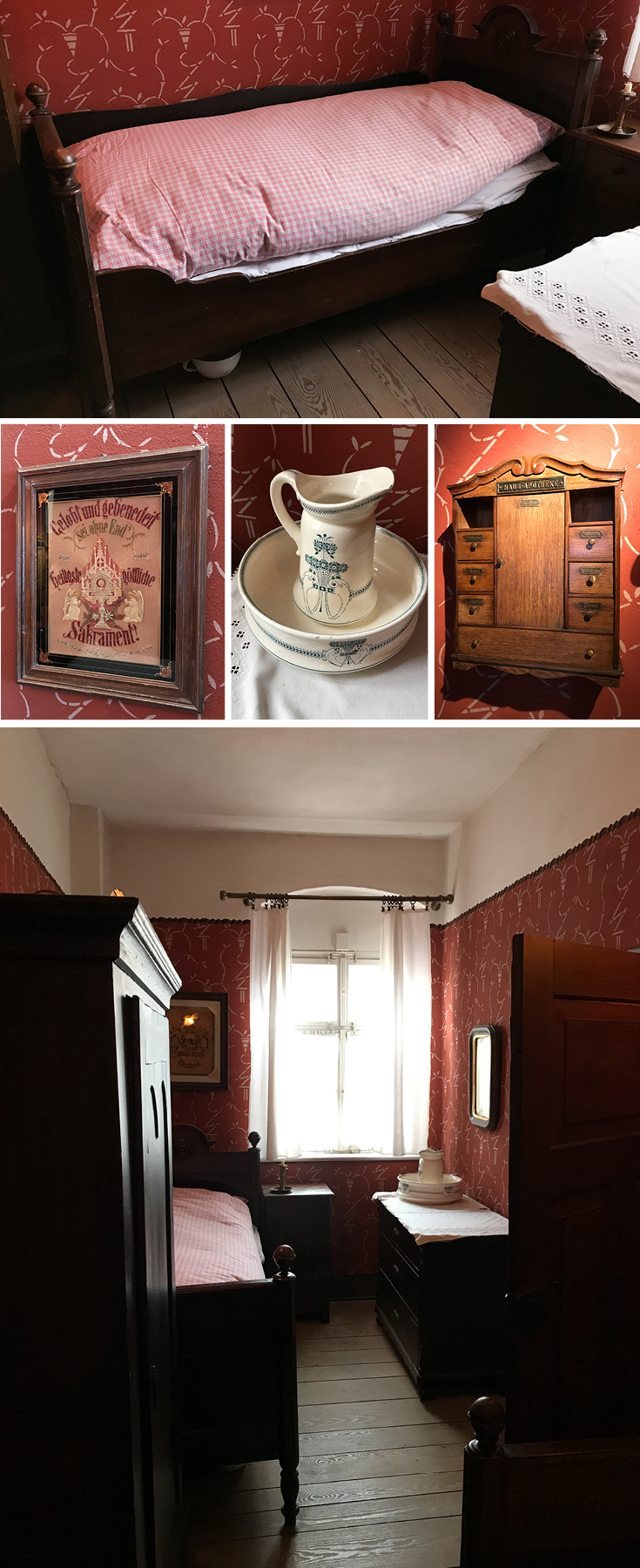
The Gardeners' Home
The home was styled for 1767 with a general parlor, kitchen, bedroom, kids’ room, grandparents’ room (which was an exhibit room and not styled as it was during the time). The through-way, or center foyer of the house was designed to allow a wagon to pass through to store food directly above the living quarters or to the garden out back.
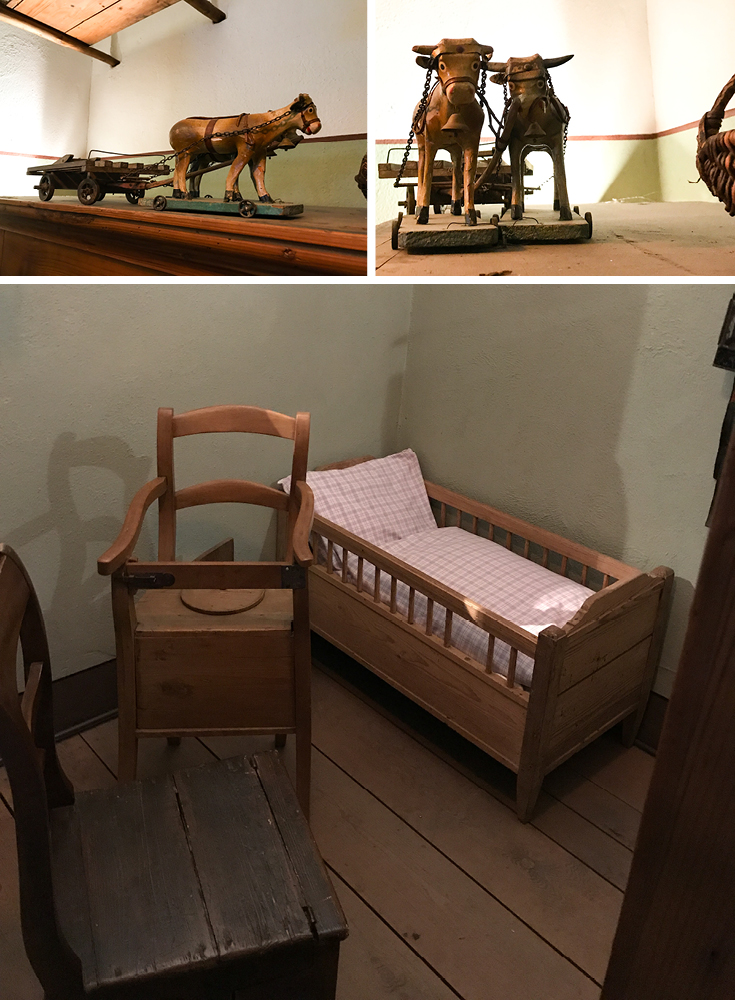
The Kitchen was Surprisingly My Favorite Room
I loved how they used open shelving to organize the kitchen. The stencil border, periwinkle blue, and stone tile combined for a charming kitchen. Attached directly to the wall are metal containers for flour and salt where you could directly scoop from while cooking.
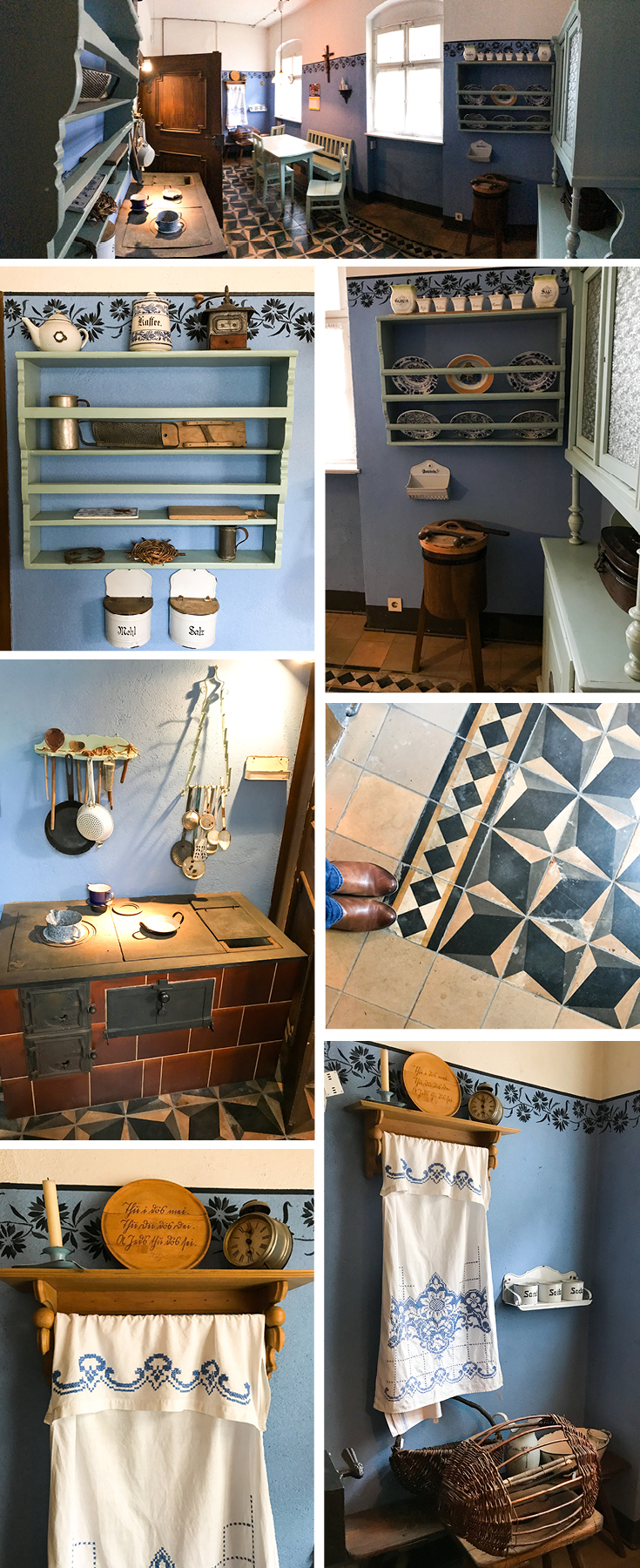
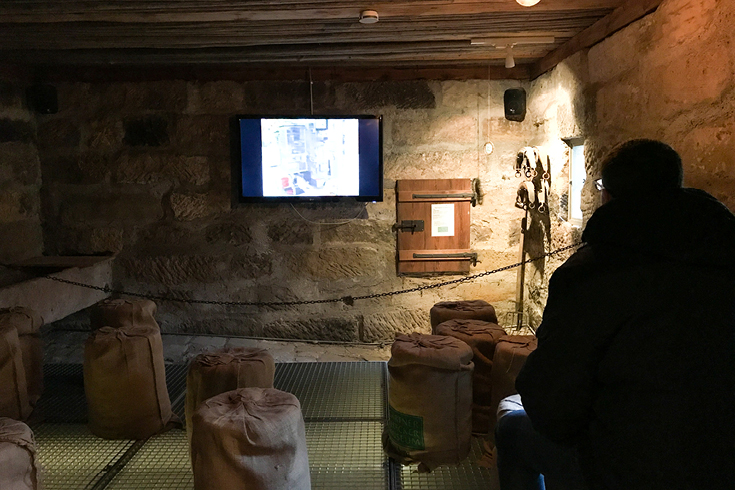
Hay Loft
In the loft above, there was an interactive video oriented display that explained the different farming and gardening tools. They also had period costumes of the time as well as a large historical photo showing the sellers, and the baskets they carried and sold from.
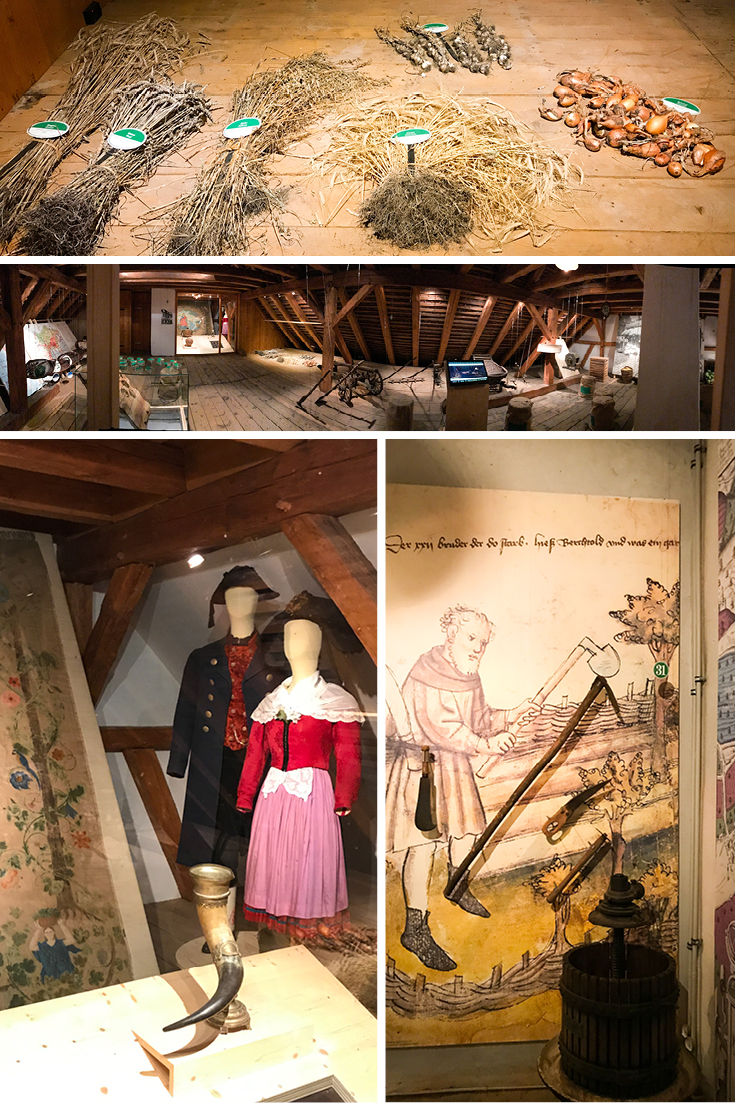
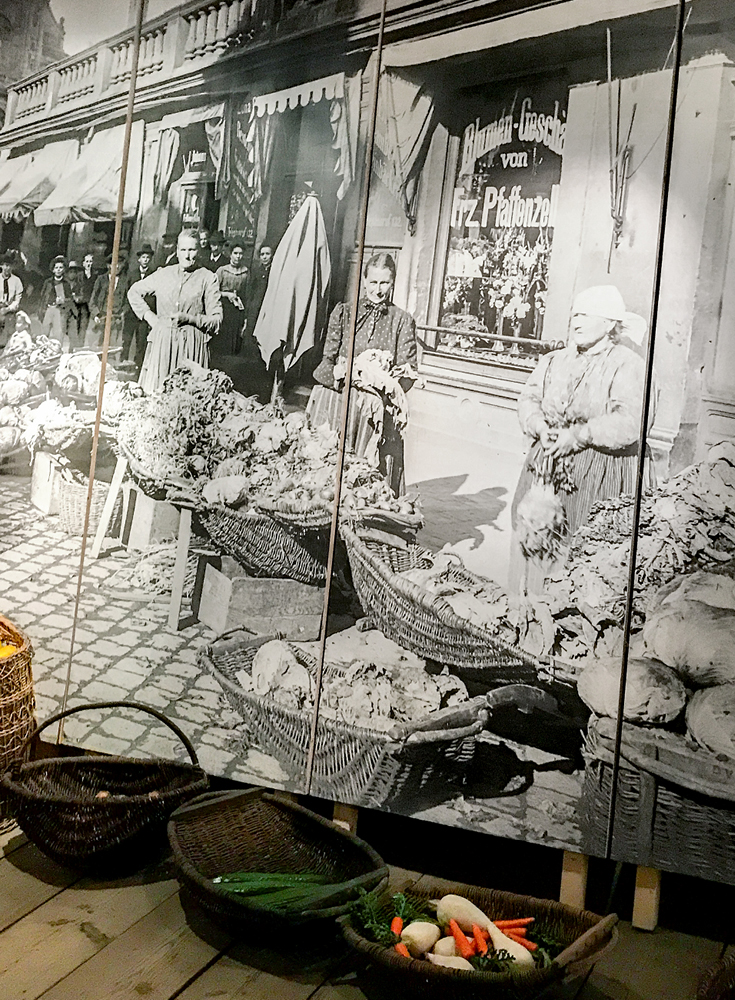
The Grandparents' Room
Here, the Museum showcases the Guild's processional staffs that were used in religious ceremonies and parades.
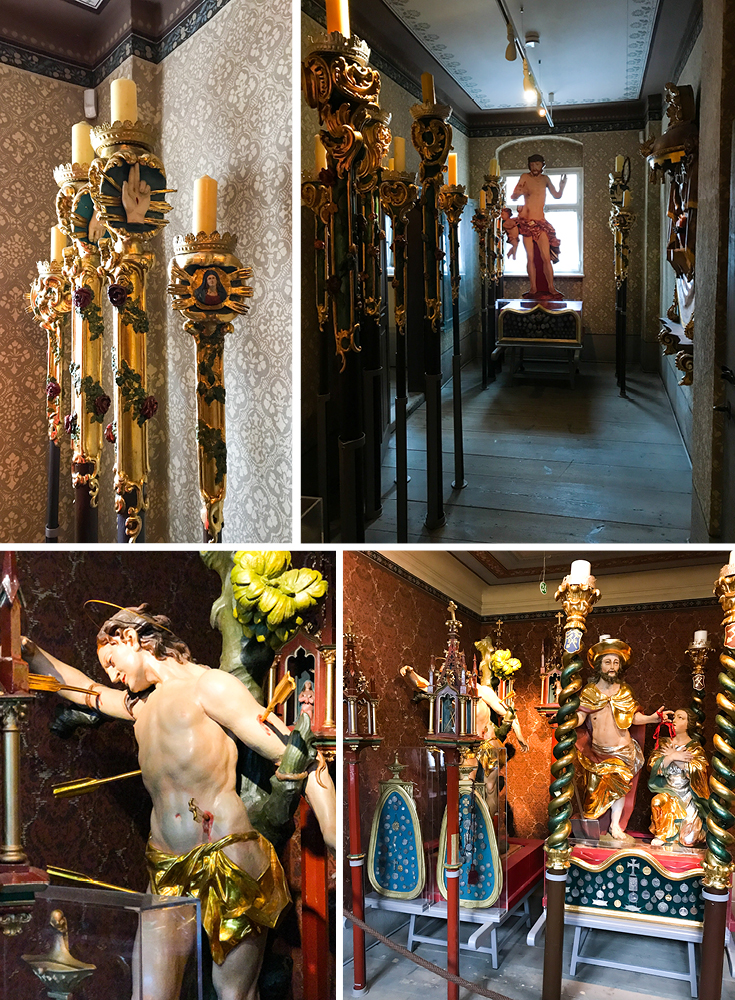

Bamberg Heritage Garden
The working garden out back had everything from flowers to vegetables. A church stood sentry in a distance making for a picturesque vista.
Taken from English Signage in the Garden:
“Bamberg Heritage Garden: Helping to conserve the “green heritage” of Bamberg’s gardeners
The Bamberg Heritage Garden was founded as part of the Urban Gardening Project run by the Bamberg World Heritage Office. In July 2013 a specially-founded voluntary association took over the running of the Bamberg Heritage Garden. The plants are cultivated following organic principles by volunteer workers from the association. The Bamberg Heritage Garden contributes to the conservation of the rare, local Bamberg vegetable varieties. It assists in the rediscovery of vegetables and varieties that are unique to Bamberg, some of which may already have died out or been forgotten. In the past, the seeds of local varieties, as well as knowledge about how to use them, have been lost. The Heritage Garden is intended to counteract such loss. In addition to preserving the ‘green heritage’ of the Bamberg gardeners, the garden is also a place where knowledge about growing and tending can be handed down-intangible heritage.
In the Heritage Garden multiple varieties of a plant are grown side by side, compared and explained. In this way, the Bamberg Heritage Garden helps maintain biodiversity, while also making history and environmental education come alive. Along with the well-known Bamberg local varieties of garlic, onion, radish, pointed savoy cabbage and the ‘Hörnla’ potato, numerous heirloom varieties of bush and climbing beans from the Bamberg region are being grown, which in former times were of great importance in local cuisine. In the course of the project seeds have also been discovered of lone local variety previously believed to have been lost- the Bamberg pear-shaped onion. This onion variety has been cultivated in the Heritage Garden since it's rediscovery, with the aim of propagating the seeds and preserving the variety for future generations.”
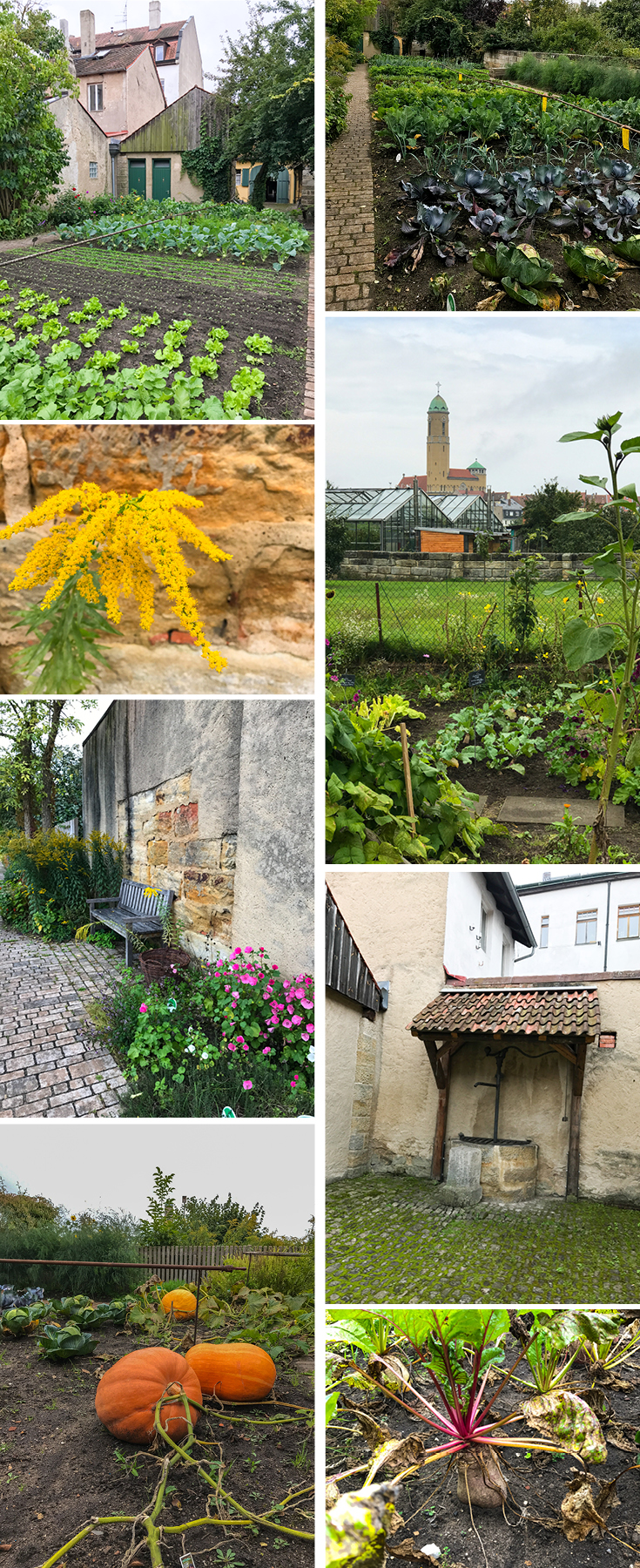
Follow Along
If you enjoyed this article, or these topics sound interesting to you, you'll love our weekly newsletter. You'll receive the newest posts each week and exclusive access to free planning resources like ‘Packing List & Tips for 2 Weeks in Germany’ and ‘Everything You Need to Rent a Car in Germany’.
Thank you for reading!

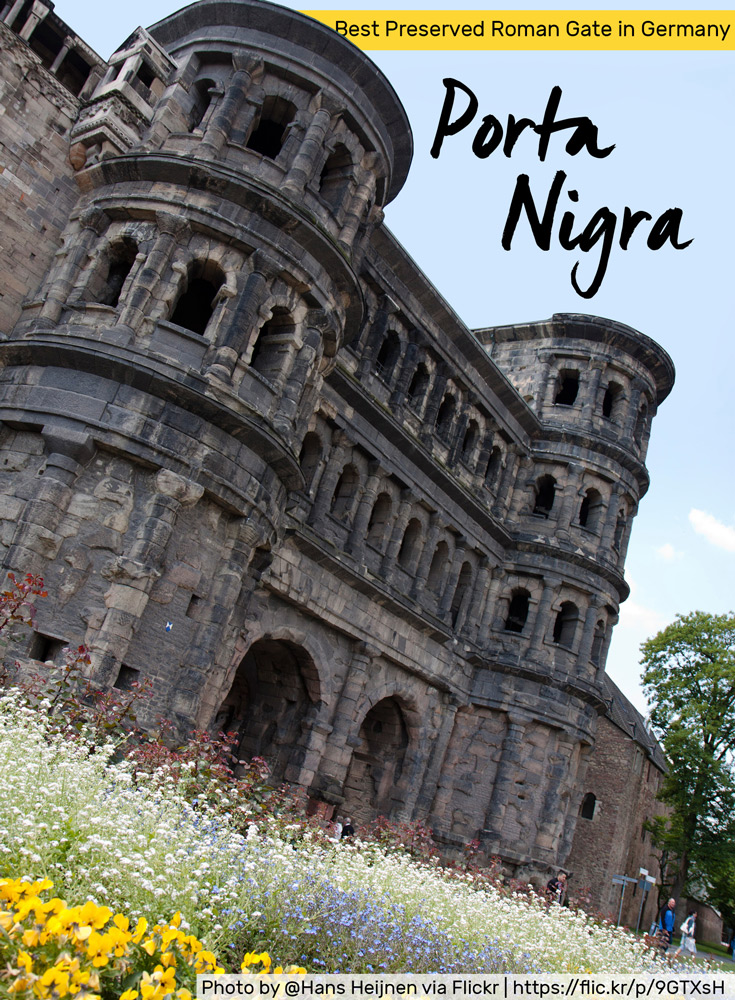
“I can’t believe we can get this close to it!” Denise exclaimed. Ever so delicately, she reaches out and puts her palm on the dark, cold stone of the Porta Nigra. “This is officially the oldest thing I’ve ever seen or touched!” Her smile lit up her whole face.
Of course it's not hard to find old things in Germany, but Trier especially has it's fair share of OLD.
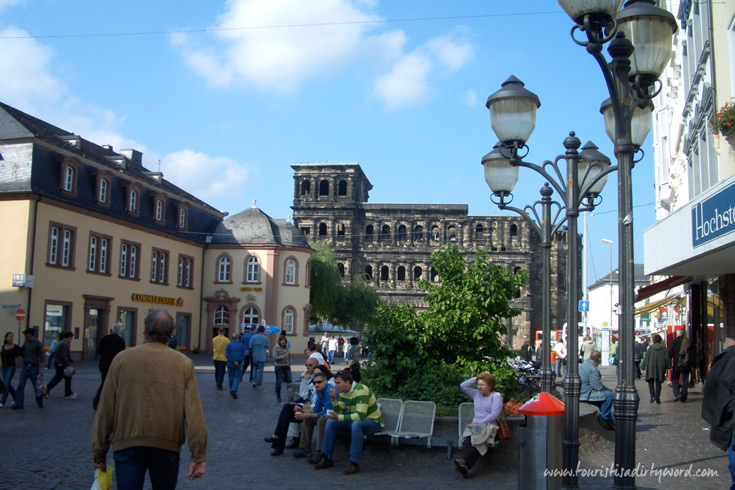
A fascinating building in the middle of Trier with an eventful history of almost 2000 years: Today we take a look at the Porta Nigra - the Black Gate, which the residents simply refer to as “Porta.” It is named for the color of its now dark gray sandstone, which originally had a pinkish red tint, but had discolored over the years and was renamed in the Middle Ages since the original Roman name had not been preserved.
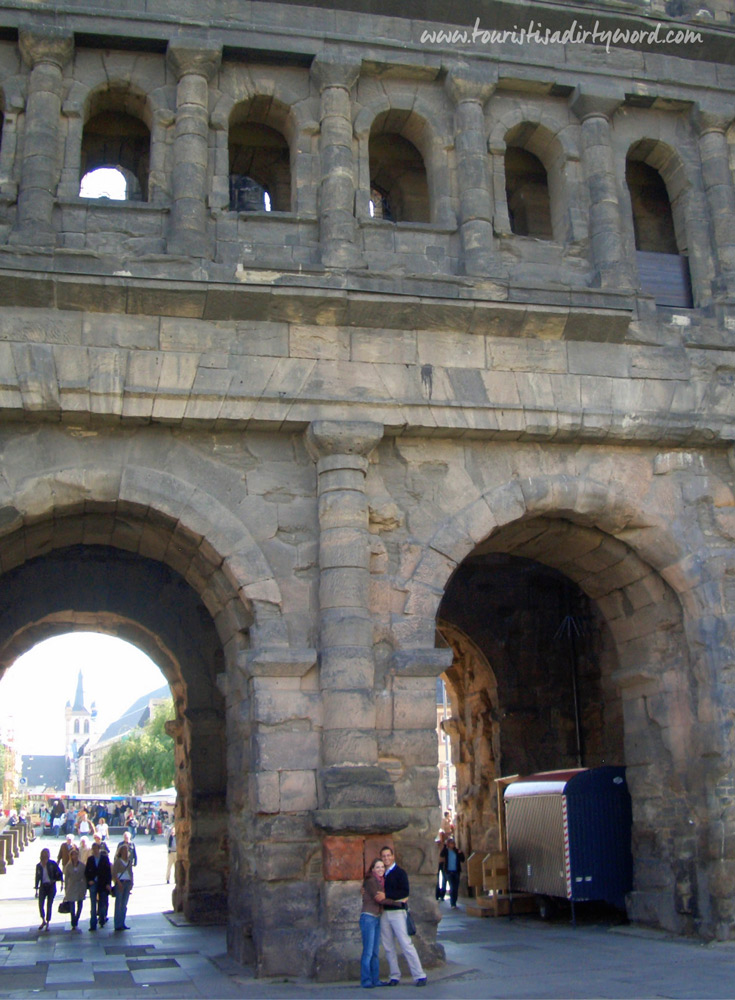
The Porta Nigra is a former Roman city gate and the best preserved in Germany. It was originally built between 186 and 200 AD with a 4-storied tower to the left and to the right of the gate. A total of about 7200 sandstone blocks were used for the construction with the largest ones weighing up to 6 tons.As one of four gates in the city of Trier, it protected the northern entrance to the city. There were also the Porta Media (Middle Gate) in the south, the Porta Alba (White Gate) in the east, and the Porta Inclyta (Famous Gate) in the west.
Only the Porta Nigra survived because the stones of the other gates were used as building materials during the middle ages, after the Romans had left Trier. However, the lead and iron braces were removed from the Porta Nigra for reuse, a damage that is still visible today.
Greek Monk Symeon
In 1028 a Greek monk named Symeon asked Poppo, the Archbishop of Trier, if he could live as a recluse in the Porta Nigra and his wish was granted. He was immured inside the Porta Nigra, living a life of poverty and chastity. Symeon of Trier passed in 1035 and was sanctified, after miracles were being reported to be happening at his tomb. Archbishop Poppo later founded a monastery at the site of Symeon's tomb called Simeonstift in his honor and you can still look over into the monastery from the Porta Nigra.
The Porta Nigra itself was transformed into a church, with the inner courtyard roofed and two intermediate ceilings inserted in the western tower. The upper floor was for the monks and the lower floor for the general public. The eastern tower was leveled, since it was not needed anymore, and an additional gate, Symeon Gate, was built adjacent to the east side of the Porta Nigra. The ground floor was closed off and an outside staircase was added in order to reach the upper floors. Almost 800 years passed without any major changes.
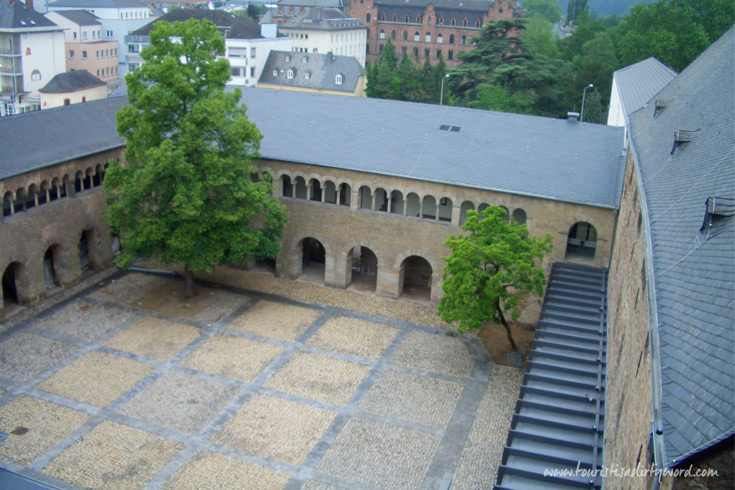
Napoleon in Trier
In 1802, Napoleon Bonaparte, the French military leader, came to Trier and dissolved the church in the Porta Nigra and also the monastery beside it. When he returned in 1804, Napoleon ordered the Porta Nigra to be converted back to its Roman form as a gate, and all church-related pieces were gutted from 1804 to 1809. Local legend has it that Napoleon originally wanted to completely tear down the Porta Nigra, but supposedly locals convinced him that the church was a Gaulish festival hall. While another version of the legend is that the people of Trier told him about the Roman origins of the gate, persuading Napoleon to convert the gate back to its original form.
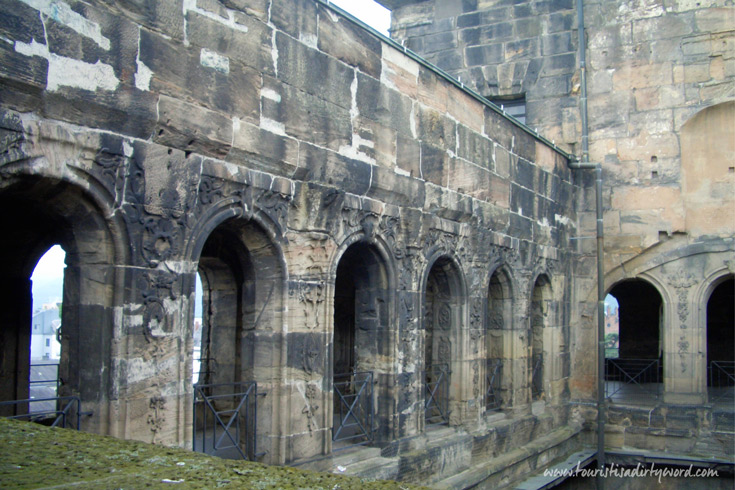
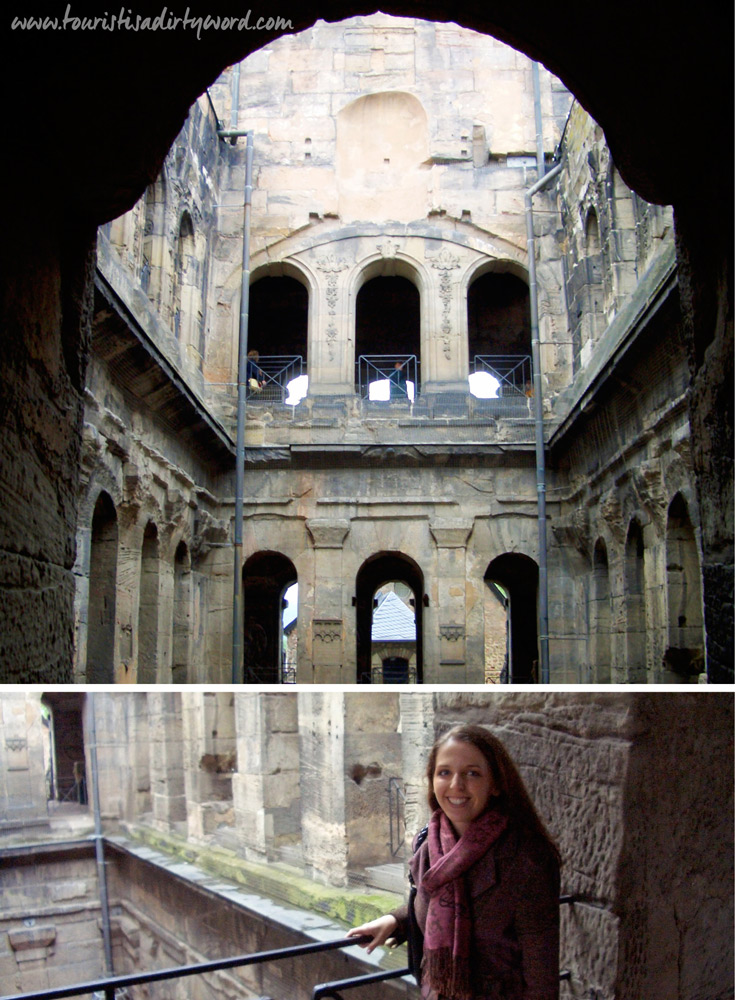
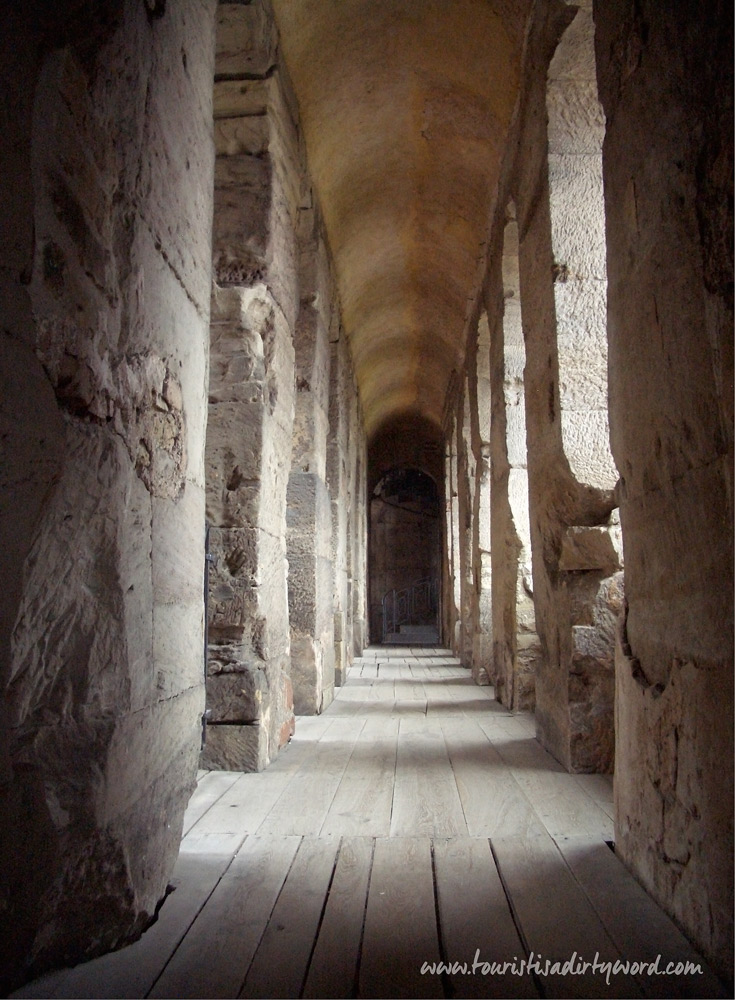
UNESCO World Heritage Site
The Porta Nigra was henceforth used as the first antiquity museum of Trier and in 1986 the Porta Nigra was designated as part of the UNESCO World Heritage Sites. To learn more about what it means to be a UNESCO World Heritage Site, be sure to check out this post. Today you can visit all levels of the Porta Nigra and if you are in Trier during the warm summer months, look for a tour guide in full Roman armor leading the guided tours.

Follow Along
If you enjoyed this article, or these topics sound interesting to you, you'll love our weekly newsletter. You'll receive a free Germany Packing list for signing up, and you'll receive each week's newest posts every Friday. Thank you for reading!

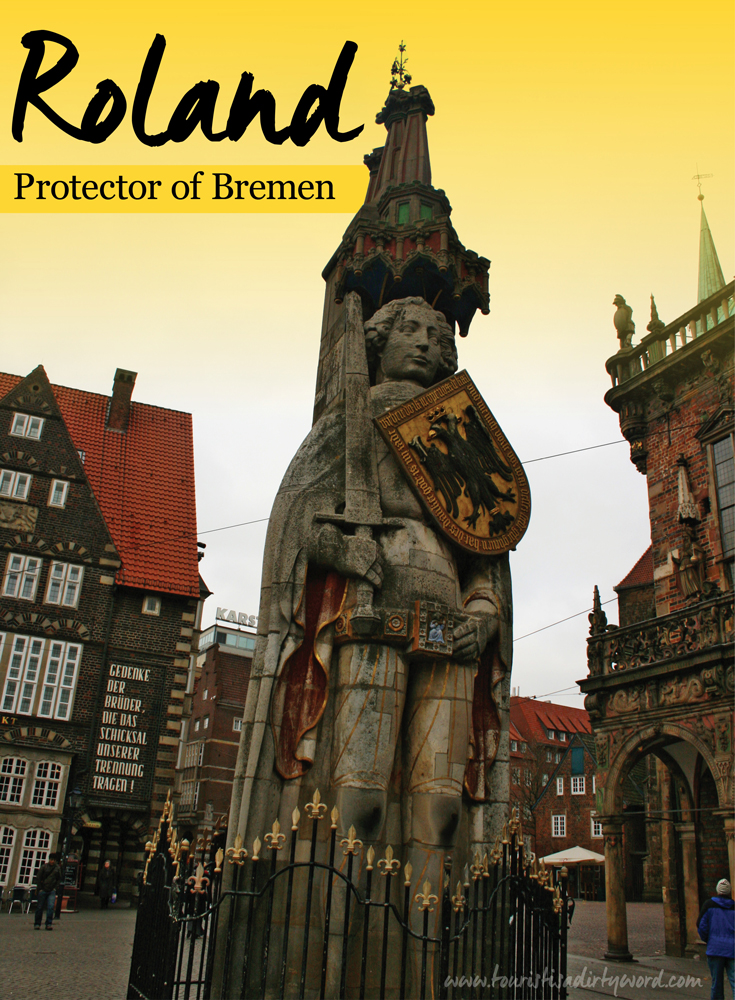
In the middle of Bremen's city center you can see a legendary war hero standing tall at an overall height of 33 feet: the Roland. Legend says that the young knight was a nephew of Charlemagne and had saved the army of his uncle in the eighth century in the Pyrenees in a battle against the Basques.
Roland Symbolism
The statue was erected on the marketplace in the city center of Bremen, where it symbolizes the city's independence and freedom. The armor and a raised sword clearly identifies Roland as a knight, but there are additional elements that give away a bit more of his story.
Roland’s quest for freedom is reflected on the coat of arms on his shield showing a double-headed imperial eagle and the words: Vryheit do ik yu openbar de karl und mennich vorst vorwar desser stede ghegheven hat, des dankt gode is min radt. Roughly translated: "I manifest your freedom, as granted to this city by Charlemagne and many other rulers. For this, be thankful to God, that is my counsel."
Look close at his buckle and you can see an angel playing a harp, which testifies to the heavenly order in the Christian struggle. Roland had to lay down his life during the fight in the Pyrenees, a task he was sent to do by a higher power. To the left of the angel, there is a rose on the buckle, which is a Christian symbol for martyrs. In medieval Christian symbolism the rose stood for the blood that was shed by Jesus on the cross and symbolizes God’s love.
Measuring By the Roland
With all this symbolism, there is even a much more practical purpose to this statue, as the distance between Roland’s pointed knees is exactly one Bremen 'elle'. The elle was a historical unit of measurement (roughly 22 inches), and was supposed to help Bremen’s merchants to measure out their material during the weekly market. Yardsticks or measuring tape could be faked by merchants trying to sell you less product for the same price as a competitor. However, with a Roland around, the customer could double-check his purchase for accuracy while the merchant was still on the marketplace. Nowadays the elle measurement is history, but you can see a darker discoloration on the knees of the statue. Legend says, that if you rub Roland’s knees, you will return to Bremen in the future.
History of Roland
But Roland was not always made out of stone. His predecessor was made of wood in the 1340s, but overturned and burned by Bremen’s Archbishop Albert II’s warriors in 1366. The church would have lost too much power if Bremen became a free city, and a tall statue with a sword and coat of arms looking from the marketplace right over to the church of Bremen sent a clear message to the Archbishop. In 1404 the Bremer Council erected the Roland made out of sandstone by stonemasons Claws Zeelleyher and Jacob Olde.
Roland Replicas All Over the Globe
If you have not made it to Bremen and travel to or live near New York City, go see a 5 foot wooden replica of the Roland in the Evangelical Lutheran Church of Zion in Brooklyn, New York. It is part of the pulpit and was a gift from the city of Bremen in 1890 to former German citizens who have found a new home in New York. However, this is not the only replica of Roland worldwide. The Brazilian city Rolândia was founded in 1932 by German immigrants and is named after the Bremer Roland. Since 1957, Rolândia also has a large replica of Roland, donated by coffee merchants from Bremen. And even in an amusement park in Obihiro, Japan you were able find a replica created as part of a larger German fairy tale city with various German statue replicas. Unfortunately, the park closed in 2003 due to poor economic conditions and a decline in visitors.
Roland Myth
There is one story that we could not confirm, stating that there is a backup statue underground in Bremen, just in case something happens to Roland. Is that true or just a myth? Let us know in the comments if you know more about this or even more interesting facts about Roland.
The Roland Statue along with the Bremen City Hall are an ensemble UNESCO World Heritage Site. Find out what that actually means in Denise’s previous post.
Follow Along
If you enjoyed this article, or these topics sound interesting to you, you'll love our weekly newsletter. You'll receive a free Germany Packing list for signing up, and you'll receive each week's newest posts every Friday. Thank you for reading!

